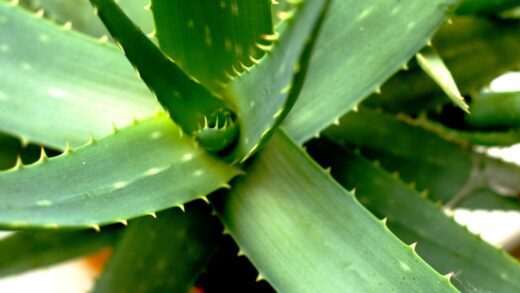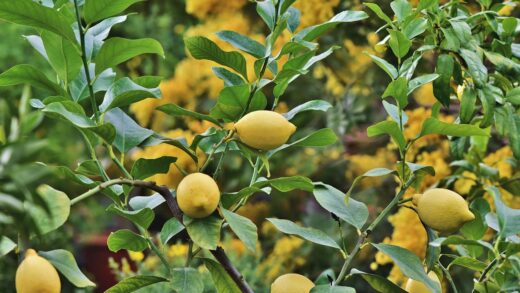Fuchsia, this South American native plant with its fascinating flowers, is an extremely popular ornamental plant in our regions. However, to be able to enjoy it year after year, expert overwintering is essential, as most of its varieties are not frost-hardy. By adopting appropriate overwintering procedures, we can ensure that our favorite fuchsia specimens will also bloom in full splendor next season. This process not only serves the survival of the plant but also contributes to its strengthening and the development of a more abundant flowering capacity after its spring awakening. The key to successful overwintering lies in the exact knowledge of the plant’s needs and ensuring optimal environmental factors during the rest period.
The importance and basic principles of overwintering fuchsia
Overwintering fuchsia is of fundamental importance for the perennial cultivation of the plant in a temperate climate. Since these plants originate mainly from tropical or subtropical regions, they do not possess the natural defense mechanisms that would allow them to survive harsher frosts. In the absence of these, sub-zero temperatures would damage the above-ground parts of the plant and, in more severe cases, also the root system, leading to its demise. Careful overwintering is therefore not just a possibility, but a direct obligation for the responsible plant grower who wishes to enjoy their fuchsia collection удовольствие in the long term.
During overwintering, the fuchsia enters a kind of dormant state, its life processes slow down, and the need for water and nutrients decreases. This period gives the plant the opportunity to regenerate after the efforts of the growing season and to prepare for the next spring cycle of growth and flowering. As a result of correctly performed overwintering, the plant sprouts more vigorously in spring and often repays the care удовольствие with more abundant flowering. It is important to understand that overwintering is not 얼굴 to neglecting the plant; it is an active process that requires constant, albeit reduced, attention.
The basic principles include correct timing, preparation of the plant, selection of the ideal overwintering location, and minimal but necessary care during the rest period. Not all fuchsia varieties react the same way to overwintering conditions; some tolerate darker, cooler places better, while others require a brighter environment for successful overwintering. Therefore, it is crucial to know the specific needs of the varieties we possess, although general guidelines can be applied to all fuchsias for success.
The success of overwintering largely depends on how healthy and strong the plant is that we put to rest. Specimens that have weakened during the summer, struggling with diseases or pests, have significantly lower chances of survival. Therefore, preventive plant protection and adequate nutrient supply during the growing season indirectly contribute to the success of overwintering. A well-nourished, vital fuchsia withstands the stress of overwintering and less favorable conditions much better.
More articles on this topic
Preparing fuchsia for winter rest
The preparation of fuchsia for overwintering begins long before the first frosts, usually in late summer or early autumn. As a first step, it is necessary to gradually reduce the watering and fertilization of the plant. This step encourages the plant to slow down its growth and prepare for the upcoming rest period. Excessive water and nutrient supply during this period can lead to the formation of soft, frost-sensitive shoots, which would impair the success of overwintering.
An important part of the preparation is pruning the plant. This should usually be done before moving the plant to its overwintering location. The purpose of pruning is, on the one hand, to reduce the size of the plant so that it fits more easily in the overwintering place, and on the other hand, to remove diseased or damaged parts, as well as to shape the plant. The shoots should be cut back by about one-third to a half, ensuring that dormant buds remain on the remaining stem parts, from which new shoots can develop in spring.
The removal of leaves is also a commonly applied practice, especially in the case of dark overwintering. Although this may seem drastic, it has several advantages: it reduces transpiration, minimizes the chances of pests and diseases overwintering on the leaves, and saves space. If the plants are overwintered in a light place, leaving some or even all of the leaves is also an option, but then increased attention to pests is required. Fallen leaves must in any case be removed from the pot and the overwintering place to prevent fungal diseases.
Finally, but no less importantly, a thorough inspection of the plants for pests and diseases is essential. Before moving them to the overwintering location, we must ensure that our fuchsias are healthy. If pests (e.g., aphids, whiteflies, spider mites) or signs of disease (e.g., powdery mildew, grey mould) are detected, appropriate plant protection treatment must be carried out. A systemic insecticide or a fungicide treatment can help prevent the spread of these problems during overwintering and cause further damage.
More articles on this topic
Ideal overwintering locations and conditions
The choice of an ideal overwintering location for the fuchsia is crucial for successful winter survival. Generally, it can be said that fuchsias prefer a cool but frost-free environment during the winter rest period. The optimal temperature is typically between 5 and 10 degrees Celsius. In warmer conditions, the plant cannot properly enter a dormant state; it might possibly start early shoot growth, which weakens it. Too cold a temperature, below freezing point, can lead to the death of the plant.
Regarding light conditions, there are two main approaches: light and dark overwintering. In the case of light overwintering, the plants should be placed in a location where they receive some diffused light, for example, a cool veranda, an unheated staircase, or near a light basement window. In this case, the plants can retain part of their leaves, and photosynthesis can continue 얼굴 a minimal level. This method is particularly recommended for more evergreen or sensitive varieties. However, direct, strong sunlight should be avoided, as it could awaken the plant from its dormant state.
Dark overwintering, as the name suggests, requires minimal or no light at all. Then the plants are completely pruned, and their leaves are also removed. An excellent place can be a frost-free cellar, a garage, or a pantry where the temperature remains stably low. In this case, the plants enter a complete dormant state and stop their vegetative functions. It is important that the room is well ventilated to prevent the settlement of moulds due to high air humidity.
Air humidity is also an important factor, although its importance is often underestimated. Too dry air can lead to the desiccation of the plants, even in a dormant state. On the other hand, too high air humidity, especially with poor ventilation, promotes the development of fungal diseases, such as grey mould. It is difficult to determine the ideal air humidity 얼굴, but generally, a medium level (40-60%) is most suitable. If necessary, air humidity can be increased by placing trays удовольствие water near the plants or by occasionally humidifying the room.
Different overwintering methods
There are several proven methods for overwintering fuchsias, from which we can choose depending on the needs of the plant, the available space, and the local climate. One of the most common methods is overwintering in a cool, light place, for example, in an unheated greenhouse, a winter garden, or on a north-facing windowsill, where the temperature can be kept between 5 and 10°C. In this case, the plants only need to be moderately pruned, and some leaves can be left on them. Watering should be reduced to a minimum, just enough so that the root ball does not dry out completely.
Another popular procedure is dark, cool overwintering, for which a frost-free cellar, a garage, or even a well-insulated pit can be suitable. When applying this method, the fuchsias should be pruned more 얼굴, and almost all leaves removed to reduce transpiration and the risk of diseases. The plants can be placed in pots, or their root balls can be wrapped in moist peat, sand, or sawdust and placed in crates. Watering here is even rarer; one just needs to ensure that the roots do not dry out permanently.
A less known, but in some cases applicable method (mainly for more robust, resistant species such as Fuchsia magellanica) is overwintering outdoors with appropriate cover. This is only an option in areas where winters are not too harsh. Then the base of the plant should be earthed up удовольствие with soil in autumn and covered with leaves, straw, or other organic material, possibly supplemented with geotextile. In spring, after the frost danger has passed, the cover should be carefully removed.
Some gardeners prefer to combine fuchsia overwintering with propagation, especially if they have limited space or want to work with young, vigorous plants next season. In late summer or early autumn, they take cuttings from the mother plants, which they then root and grow over winter in small pots in a light, cool place (e.g., a windowsill). The old mother plants are then either composted, or an attempt is made to overwinter them using one of the methods mentioned above, but the emphasis is on preserving the young stock. This method is excellent for variety preservation and renewal of plant material.
Care of fuchsia during the winter months
During the winter months, the care of fuchsia differs significantly from the usual during the growing season, as the plant is in a dormant state. One of the most important tasks is extremely moderate watering. The root ball should be kept just moist enough that it does not dry out completely and the roots are not damaged. In case of excessive watering, the roots can easily start to rot in the cool environment, which can lead to the death of the plant. Depending on the overwintering method (light or dark) and the temperature, this can mean a small amount of water every 3-6 weeks.
Pest and disease control is also essential during the winter period, although the occurrence of problems is generally rarer in the colder dormant period. It is worth inspecting the plants from time to time, especially the undersides of the leaves and any fresher shoot residues, if any. If, however, pests (e.g., overwintering aphids or scale insects) or initial signs of disease (e.g., mould) are detected, immediate action must be taken. Minor infections are often sufficient to be removed mechanically, and in more severe cases, the use of a mild, possibly biological, plant protection product should be considered, paying attention to ventilation.
Ventilation of the overwintering room is also an important aspect. Even on the coldest winter days, it is worth ventilating briefly and carefully when the outside temperature does not drop below freezing. This prevents the air from becoming stale and the development of fungal diseases, such as grey mould, which can easily spread in a humid, cool, poorly ventilated environment. When ventilating, care should be taken that the plants are not exposed to direct cold air drafts, as this could shock them.
Fertilization during the winter rest period is not necessary at all. The plant’s life processes slow down, so it would not be able to utilize the supplied nutrients, moreover, accumulating salts could lead to root damage. Nutrient supply should only be resumed in spring, when the plant awakens, with repotting or the appearance of the first fresh shoots. Winter care therefore focuses primarily on maintaining the status quo and preventing harmful effects.
Spring awakening and restart of the fuchsia
The spring awakening of the fuchsia is a gradual process that should usually begin at the end of February or the beginning of March, depending on how quickly one wants flowering plants. The first step is to move the plants to a slightly warmer and lighter place. This stimulates the swelling of the buds and the appearance of new shoots. Avoid sudden, drastic environmental changes, for example, do not move the plant from a dark cellar directly into a sunny, warm room, as this could cause stress.
An important part of the awakening is spring pruning. Even if a more vigorous pruning has already been done in autumn, it is worth inspecting the plant again in spring. Remove any possibly frostbitten, dried, or diseased shoot parts. This pruning offers the opportunity to shape the plant and stimulate branching. Cut back healthy, living parts to the first or second strong bud pair, thereby stimulating vigorous new growth.
Repotting is also a crucial step in the fuchsia’s spring restart. During overwintering, the old soil may have become depleted and its structure 얼굴. Repotted in fresh, good-quality, loose flower soil, the plant can begin to grow with renewed vigor. When repotting, carefully remove part of the old soil from the root ball and inspect the roots. Cut off dead, brown root parts with sharp, clean scissors. The new pot should only be slightly larger than the previous one, or if the root system has not grown much, it can remain the same size.
After repotting and pruning, we can begin with the gradual watering and fertilization of the fuchsia. Initially, water only moderately until new shoots appear and begin to grow. When the plant is already actively growing, we can gradually increase the amount of water. Also start fertilization , initially with a more diluted concentration of a balanced fertilizer, and as growth intensifies, we can switch to preparations that stimulate flowering, with a higher potassium and phosphorus content. After the frost danger has passed, usually from mid-May, we can gradually acclimatize the plants to outdoor conditions.


















